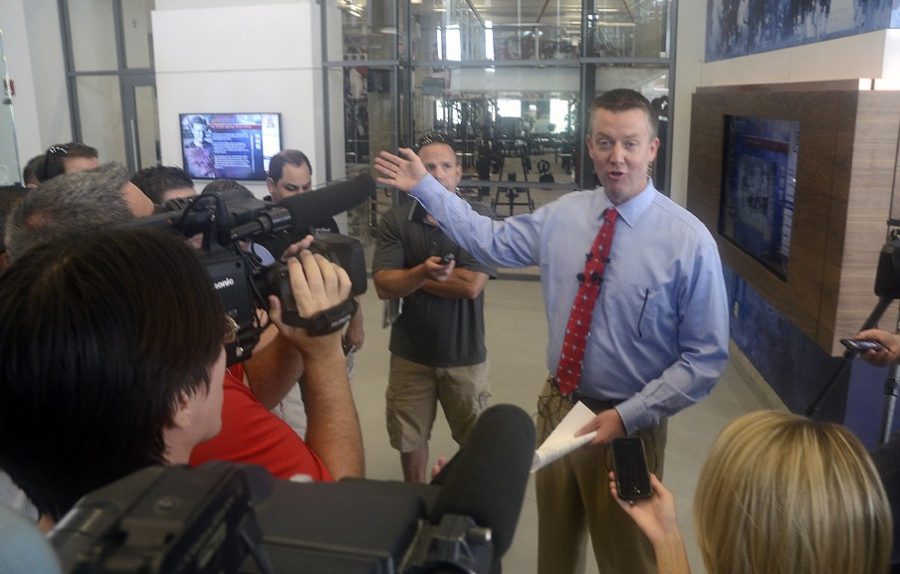Modern day college sports have grown into some of the most lucrative conglomerates today, and have recently gained enough popular appeal to generate hundreds of millions of dollars in revenue annually through media deals, sponsorships and various other investments.
The National Collegiate Athletic Association consists of more than 1,000 individual institutions and is directly responsible for organizing the athletic programs of many colleges and universities in the U.S. The most recent data available indicates that in 2011-2012 alone, NCAA reported revenue totaling $871.6 million. This revenue directly affects the amount of scholarships institutions are set to receive.
“[Every year], we get 315 tuition waivers from the NCAA, and we distribute them amongst all of our teams,” Vice President and Director of Athletics Greg Byrne explained. “Then, in addition, we pay for pretty much everything else as well — room, board, books, [etc].”
The NCAA’s expenses totaled $800 million, leaving the association with $71.6 million of profitable revenue. Although the NCAA claims to be nonprofit, its designation as a nonprofit association is only based on how it uses money, not how much revenue is generated.
Nevertheless, the question remains: Why, with the NCAA raking in the type of money that it does, is it limiting the number of scholarships provided to each institution and controlling so precisely the division of aid between different sports?
“The UA has no control over the amount of scholarships or even how they are distributed among the various sports,” Byrne said. “The NCAA sets strict distribution guidelines and rules in regard to these 315 scholarships, which every athletic program [nationwide] are to follow.”
The answer is simply that the NCAA is a business first and foremost that cares the most about putting itself in the best position to make the greatest potential revenue. Could it do something more to level the gap between top-tier sports like football and basketball and less hyped sports like baseball? Of course it could — but it doesn’t want to.
The NCAA has purposefully invested heavily in men’s basketball and football, selling the rights to broadcast those big sports on channels like Disney/ESPN and Turner/CBS Sports. With those sports becoming more popular as they enjoy more time on the air, the audience begins to crave more of what it is being shown, and eventually its tastes are totally skewed toward watching college football and basketball.
With the current scholarship system in use by the NCAA, the association clearly favors football and men’s basketball at Arizona, like most schools, because they generally represent the only two profit-generating sports. As a result, each men’s basketball and football player (who is not a walk-on) is covered by a scholarship. The Wildcats’ baseball team, on the other hand, is forced to deal with splitting up 11.7 scholarships over 35 players on the roster, as sophomore UA baseball player Joseph Maggi told the Daily Wildcat in September.
The NCAA needs to take action in leveling the playing field between all competitive sports on campus, and must not institute a system of de facto discrimination that favors some sports at the expense of others.
—Follow Evan Rosenfeld @EvanRosenfeld17









